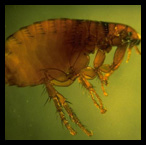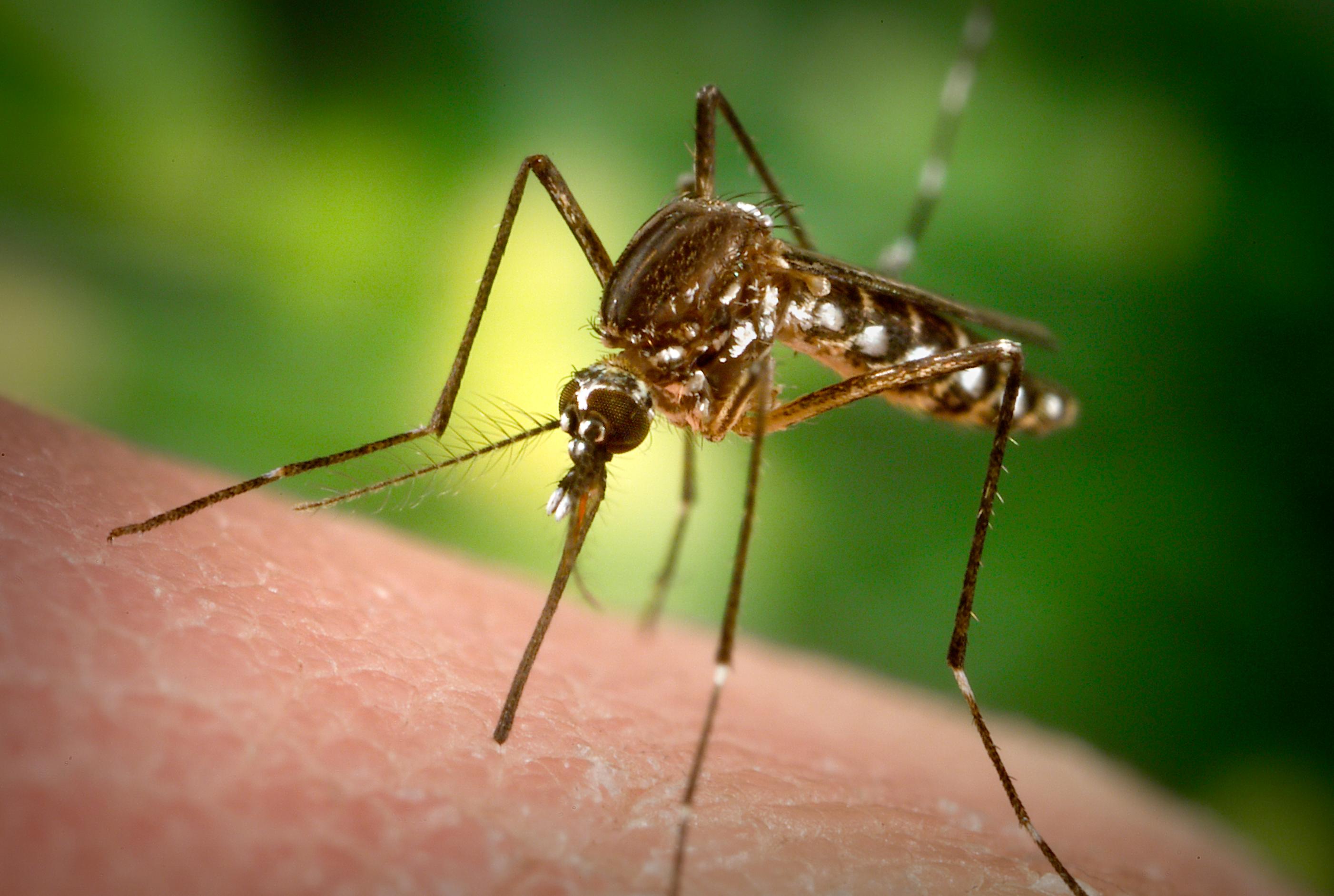Description:
Adult fleas have structures on their head capsules called combs that prevent them from being dislodged from hair or feathers. In addition they have a sensilium, sensory structure, which helps them detect a host by air movement, vibrations and temperature gradients. All adults have piercing/sucking mouthparts that they use to obtain a bloodmeal. The female flea will produce hundreds of eggs in her lifetime.
Eggs are laid on the host and drop to the nest or bedding where they incubate for about 5 days.
The larvae develop in the nest or bedding and live off of organic matter from the host and dried blood of the adult fleas’ feces.
The pupal stage will last 1-2 weeks on average but is influenced by the ambient temperature and host availability. Pre-emergent adults within the pupa can remain in an abandoned room, barn or facility for up to 5 months waiting on a suitable host. The release of CO2 by a host triggers the adults to emerge from the pupa cases.
An adult can walk or run on or to a host but the primary mode of locomotion is jumping. This highly recognized trait is an important means of escape, way to reach hosts, and impressive for a flea.
Flea of importance is the cat flea. Despite its name, the cat flea is found regularly on many different domestic mammals. The cat flea occurs worldwide and is a nuisance due to it free feeding style. The cat flea will feed on cats, humans, domestic dogs, and several livestock species, as well as opossums and raccoons.
Animals Attacked:
All animals are potential hosts
Veterinary Impact:
Cases of severe anemia have been associated with huge numbers of cat flea bites for all animals attacked.
Flea bites can cause dermatitis, allergies and anemia when fleas are present in large numbers.
Fleas are immediate hosts for helminthes (tapeworms) that parasitize domestic animals.
Occasionally a severe infestation of fleas can cause the death of goats, lambs or calves due do anemia.
Control:
Flea populations are naturally regulated by a hosts efficient grooming techniques and by natural predators, such as predatory mites, pseudoscropions, beetles, and ants, that feed on the adult and larvae.
Fleas are also susceptible to parasites, plaque bacillus Yersinia pestis, protozoans, nematodes and a parasitoid wasp.





